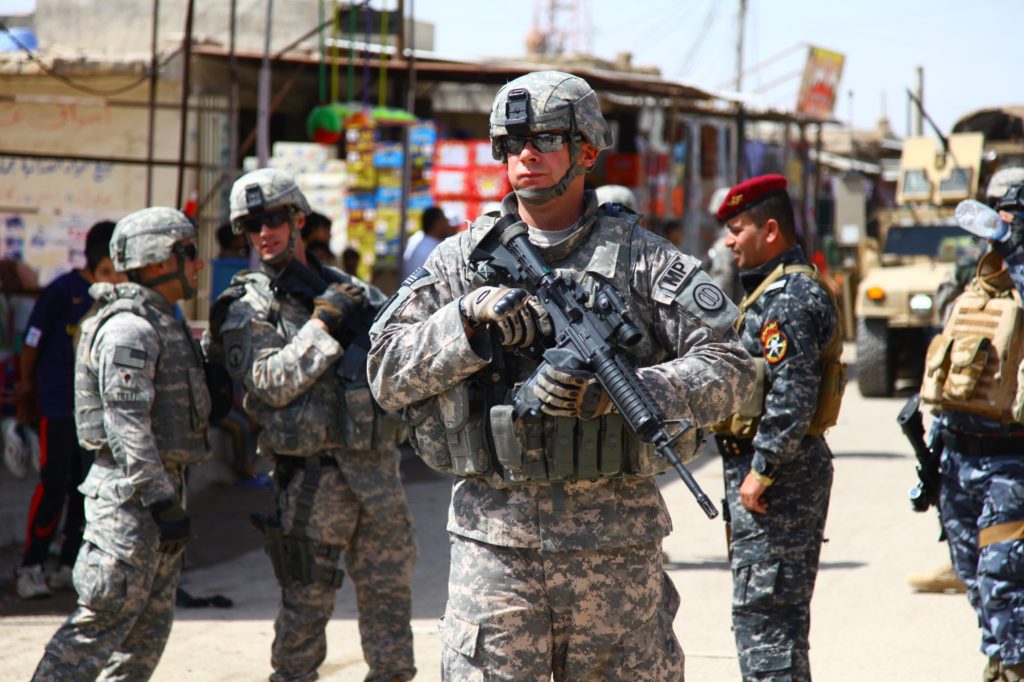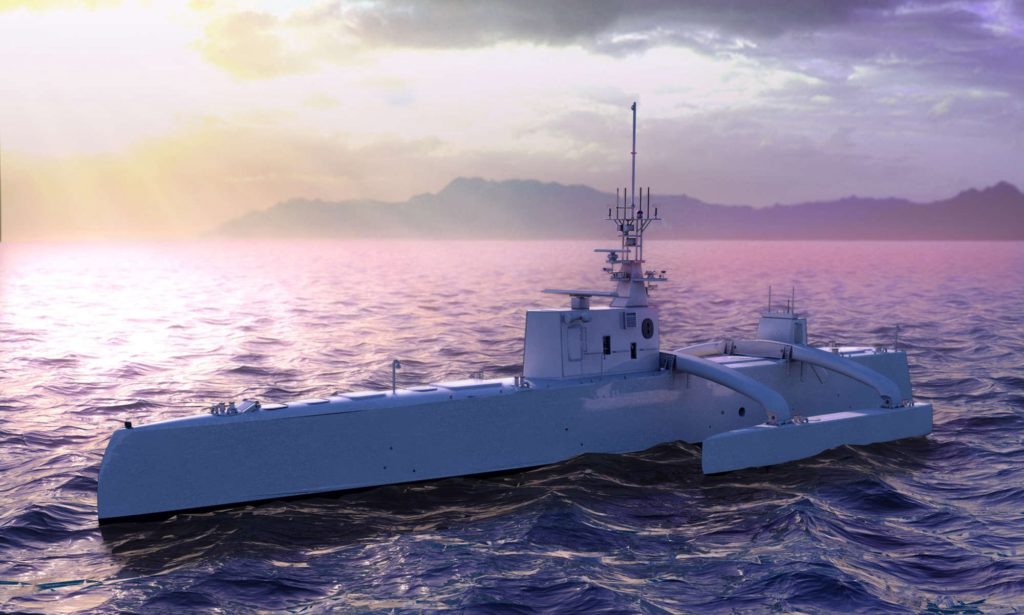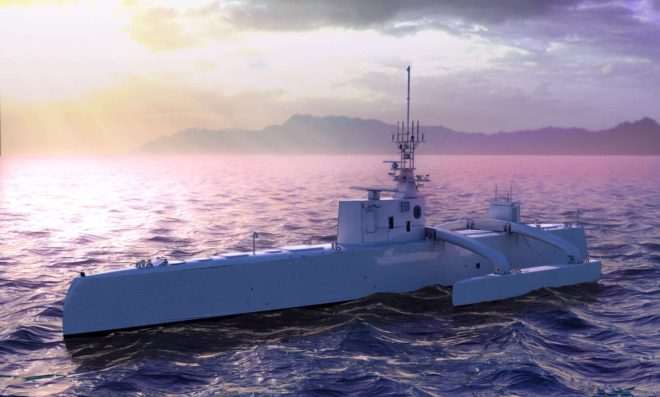“These are previews of future war on a larger scale.”
The introduction of the stirrup. Napoléon’s “Nation in arms.” The shift to rifled barrels. Blitzkrieg. The rise of radio coordination. Machine guns.
These are the types of innovations that the Army Chief of Staff, General Mark A. Milley, has in mind when he says that we are approaching a fundamental shift in the character of war over the next 10–20 years.
He discussed the topic with Anne-Marie Slaughter at yesterday’s Future of War Conference — hosted by New America and Defense One, in cooperation with Arizona State University. The conference touched on a number of subjects, but if the event could be summed up in one sentence, I would go with…
The future of war is unconventional, cross-functional, and increasingly autonomous.
The video from the full event is available on YouTube for you to view, but I want to call out five key trends from the event that are most top of mind for me in this space.
1) The battlefields of the future will look more like Fallujah and Mosul
According to Gen. Milley, “we’re going to have to, as we move forward in the next 10 years, optimize the army for urban warfare.” Battles in open terrain will increasingly be a thing of the past, as vast urbanization in developing countries is driving the majority of the world’s population into cities.

“If war is about politics, it will be fought where people are.” — General Mark A. Milley
This aligns with previous research to the same effect, in particular a report published in the U.S. Army War College Quarterly, Parameters: “The Case for Megacities.” The authors make the case that, “The Army must conduct additional research to determine how US forces can and will operate in and around such environments and develop the means to execute as part of a comprehensive improvement of the current and future force. Essentially, megacities epitomize complexity through physical and virtual environments that are dynamic, interconnected, and congested while spanning multi-dimensions in a scale that exceeds military capacity.”
What does this mean operationally? For one, formations will need to become smaller and more nimble — making key decisions at the unit and company level rather than the battalion and brigade level. But that also means that military leaders will need to invest more time and resources into training these unit leaders to make quick, ethical decisions without the latitude of command oversight.
2) Hard power and soft power are inseparable
There was certainly a lot of deference shown to the Trump administration during the conference, especially from military leaders. That said, a common theme across several of the speakers was an embrace of soft power tactics — a rebuke to President Trump’s hard power-driven budget.
Gen. Milley argued that these tactics should go hand-in-hand. “You have to have both, there’s no question in my mind.” Whether it is formal diplomacy or informal efforts at persuasion, he made the case for soft power as “the easy way” to safeguard American national security interests. This aligns with a quote from Secretary of Defense James Mattis (referenced later in the conference), “If you don’t fund the State Department fully, then I need to buy more ammunition… the more we put into the State Department’s diplomacy, the less we need to put into a military budget.”
But State Department diplomatic efforts are not the only manifestation of soft power. A wide array of capabilities was discussed during the conference, all of which require attention and integration in a 21st century, smart power approach to global strategy:
- Training and working with allied militaries and governments in international conflict zones.
- Proactive social media influence and defense against radical extremism on those platforms.
- Humanitarian efforts such as food/medical aid and disaster response.
Put quite simply, an abdication of soft power is to approach critical global challenges with one hand tied behind our back.
3) Future conflicts will be global and cross-functional
Another common theme from the conference was the growing scope of conflict across regions and functions. The general take: isolated conflicts will be few and far between in the future.
Editor-in-Chief of Defense One, Kevin Baron, interviewed the Chief of Staff of the Air Force, General David L. Goldfein, on his view of the branch’s position and readiness for challenges on the horizon. Gen. Goldfein honed in on the growing geographic scope of challenges in particular — using the U.S. military’s positioning vis-à-vis Russia as one example.
“We look at the global challenges we face, acknowledge the fact that each of these global challenges that we’re looking at [is] trans-regional in nature. Meaning they don’t live in the confines of a combatant commander’s map…that the Russia challenge, while it may be a lead EUCOM challenge,…each one of [our] combatant commanders drives to work concerned and thinking about their role in supporting a global campaign relative to the Russia challenge.”
To that end, as conflicts go global, it becomes even more important for the military to be working in lock-step as a joint force. To Gen. Goldfein, “One of our great advantages as a joint force, and a coalition force: We don’t send silver bullets to a fight….The reality is that we are completely interdependent. This is an air, land, sea, cyber force that goes forward.” This echoed Gen. Milley’s point that “Armies don’t go to war, that’s a myth. Nations go to war — and the joint force is what gets success on the battlefield.”
And what of our allies? Gen. Goldfein considers his obligation as an international air chief, working to develop the readiness of allied militaries, to be on par with his responsibilities as a service branch leader and member of the Joint Chiefs because — to his reasoning — global conflicts will necessitate a global solution.
And that’s not to mention that in an environment with fraught diplomatic relations, it may be cooperation in the military space that maintains relationships. “The daily negotiations we have with the Japanese government, relative to…how we integrate with the Japanese defense forces, that daily dialogue is probably as important in the business of confidence building and assuring allies and partners as anything else we do.”
4) Military leaders need to cut through the red tape
The keynote wasn’t delivered by a military or civic leader — instead the conference welcomed the Executive Chairman of Alphabet, and former Google CEO, Eric Schmidt. You might think this an odd choice given the topic, but remember that Schmidt was appointed Chairman of the Department of Defense’s Innovation Advisory Board last year.
It is through this point of view that Schmidt delivered (his personal view) of the DoD’s historical approach to management and operations. “The Defense department, broadly speaking, is run in many ways like a 1980’s corporation. There’s not much software used, and it feels that way.” But software is merely a surface-level issue.
“Innovation is always a culture problem.” — Eric Schmidt
To Schmidt, “There are groups in the DoD who are doing exactly the right things, and they need more support — more political support and more funding.” Hence, the Innovation Advisory Board’s recommendation that the DoD bring in a Chief Innovation Officer, as well as streamline the procurement process.
5) Autonomy and AI will be key drivers of battlefield tactics and capabilities
In a mid-session poll, 71 percent of conference attendees polled chose AI-driven software as the innovation area that the U.S. needed to focus most on for greater military advantage. Thus, it’s no surprise that autonomous capabilities and AI featured prominently at this conference.

Aerial drones are perhaps the most visible effort in this space, but this is not the only solution. Some examples mentioned that are underway for the U.S. military include bomb disposal robots as well as autonomous naval vessels and tactical vehicles.
America’s competitors are putting a premium on autonomous research as well. Per Gen. Milley, the Russian military is aiming for 30 percent of its capabilities to be autonomous by 2020. Meanwhile, China is challenging the United States in the race to become the leading investor in AI research.
Schmidt had plenty to say about the potential for AI and autonomy — both of which featured in the Innovation Advisory Board’s recommendations to the Department of Defense. “Our competitors are clearly investing in these areas…who is the largest manufacturer of autonomy? The Chinese with DGI….It’s important that the military make AI and machine learning a component of their work.”
Specifically, the U.S. military, like leading businesses, needs to adopt an AI-first strategy.
The most prominent use case for AI may be in cyberdefense, which is top of mind in an era of hybrid warfare — particularly that orchestrated by Russia. Here, machine learning has the potential to create systems that are stronger and more agile than attackers — fundamentally altering the balance of future tactical engagements.
